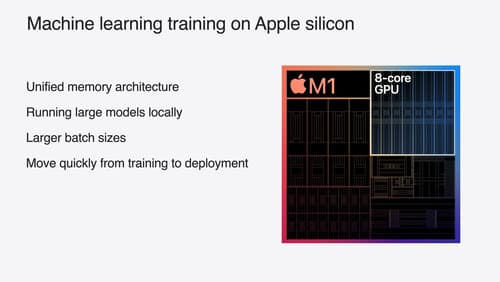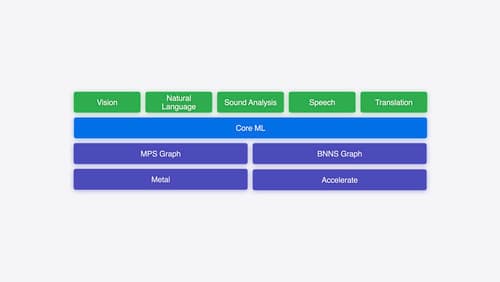What are Apple's guidelines for making excellent ML models?
Asked on 2025-02-17
1 search
Apple's guidelines for making excellent machine learning (ML) models on their platforms involve several key phases and considerations:
-
Model Training: Utilize Apple silicon and the unified memory architecture on Mac to architect and train high-performance models. Training libraries such as PyTorch, TensorFlow, JAX, and MLX are recommended, as they leverage Metal for efficient training on Apple GPUs. This phase focuses on defining the model architecture and training it with the right data.
-
Model Preparation: Convert the trained model into the Core ML format using Core ML tools. This step includes optimizing the model for Apple hardware using various compression techniques to balance storage size, latency, and accuracy.
-
Model Integration: Write code to integrate the model with Apple frameworks to load and execute it. Core ML automatically segments models across CPU, GPU, and neural engine to maximize hardware utilization, simplifying the development workflow with Xcode integration.
-
Utilizing Apple Frameworks: Leverage built-in intelligence and ML-powered APIs to create seamless user experiences. Customize models using Create ML for specific use cases, and take advantage of Apple's research initiatives and open-source tools like MLX for further exploration.
-
Deployment and Optimization: Use Core ML and other Apple frameworks to deploy models on devices, ensuring efficient and low-latency inference. Apple's tools and APIs are designed to provide a robust foundation for building intelligent experiences in apps.
For more detailed guidance, you can refer to the session Explore machine learning on Apple platforms (07:16) which covers running models on device and other related topics.

Train your machine learning and AI models on Apple GPUs
Learn how to train your models on Apple Silicon with Metal for PyTorch, JAX and TensorFlow. Take advantage of new attention operations and quantization support for improved transformer model performance on your devices.

Platforms State of the Union
Discover the newest advancements on Apple platforms.

Explore machine learning on Apple platforms
Get started with an overview of machine learning frameworks on Apple platforms. Whether you’re implementing your first ML model, or an ML expert, we’ll offer guidance to help you select the right framework for your app’s needs.
